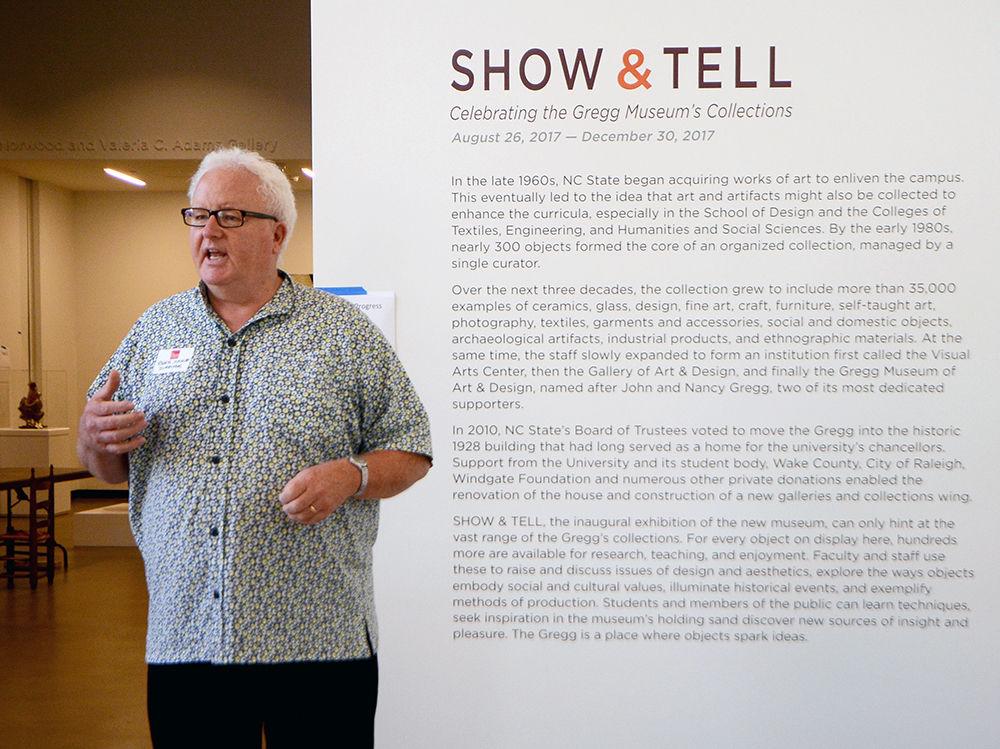After two years of relocation and renovation, the Gregg Museum reopened on Saturday at the historic chancellor’s residence on Hillsborough Street. Technician had the chance to speak to Roger Manley, the Gregg Museum director, on Saturday at the grand reopening about the museum and his experience thus far serving as director.
What is so special about the grand reopening today?
Well, today is our grand reopening, because the Gregg Museum has actually been on campus for 40 years. For many, many years, we were annexed to the Talley Student Center, which made it really hard for the public to find, but now we’re in a very public location right across the street from the Belltower and right on Hillsborough Street where everybody driving by can see it, and we’re just really happy to have this building where we can welcome the public and welcome the students.
When did you start as director of the Gregg Museum?
I started as director of the Gregg in 2010, that was just shortly after Charlotte Wainwright, who had run the Gregg many years before that, retired and then I had been living overseas and had just come back after living 10 years in France. The reason I applied is I had actually worked back in the ‘90s as a curator for three or four years, as a guest curator for individual shows. Sort of one show at a time, where I’d do one and they said, “That was fun, let’s do another one.”
Were you a student at NC State?
I was not a student at NC State. I ended up working for State; it’s sort of a strange story behind it. When I was about 17, I had a bad first semester of college. I failed calculus and a few things like that, and at the end of the first semester, I decided didn’t want to go home because I was afraid my parents would be very upset with me. So, I went on a camping trip hitchhiking in the Outer Banks and while I was out there, I got picked up by a truck driver who dropped me off at his grandmother’s house and met this very strange artist.
His grandmother had filled her house with 300 sculptures, and later I got to know her. Years later, she passed away and the family called me up and asked me if I would help them figure out what to do with her stuff, and I thought of NC State, and the Gregg Museum agreed to take it, so they absorbed her life’s work and then they invited me to put together a show of it. Her name was Annie Hooper. It was all because I had my thumb out at the right time.
Is Annie Hooper’s work still in the Gregg collection?
It is still in the Gregg collection, although we’re getting ready to split it up a little bit with some other museums. Some of it will go to the Smithsonian, some of it will go to the John Michael Kohler Museum in Wisconsin and some will go to the Cameron Museum of Art in Wilmington. The four of us will share it, rather than us having all of it, and I think that’s better. It’ll get more exposure and more people will be able to enjoy it.
How do you end up getting the pieces that you display in the Gregg Museum?
Nearly everything we have in our permanent collection came about as a donation. We get calls all the time from people wanting to donate something, and I always say, “We’ll look at anything.” A good percentage of the time, somebody will offer something and we’ll say, “Yes.” As an average, we average around 900-1000 objects a year, so if you do the math, it’s around two or three a day that we accumulate in the course of the year. The permanent collection is stored in a secure storage area downstairs.
How is the Gregg Museum different from other local museums?
It differs from the other local museums partly in its emphasis. I think it’s great that the Triangle area has great variety in its museums, and we tend to specialize more in what I would call decorative arts, which is like furniture, textiles, design, photography and that kind of thing.
Our collection is about three times the size of any other area museum, and we like to try to make it a lot more accessible. We can’t guarantee that everybody who wants to see something will be able to put their hands on it, but we do go out of our way to try to make it possible for people to get at least up close and personal, and have a good look at something that they want to a do a research project on, or just understand how something is done.








